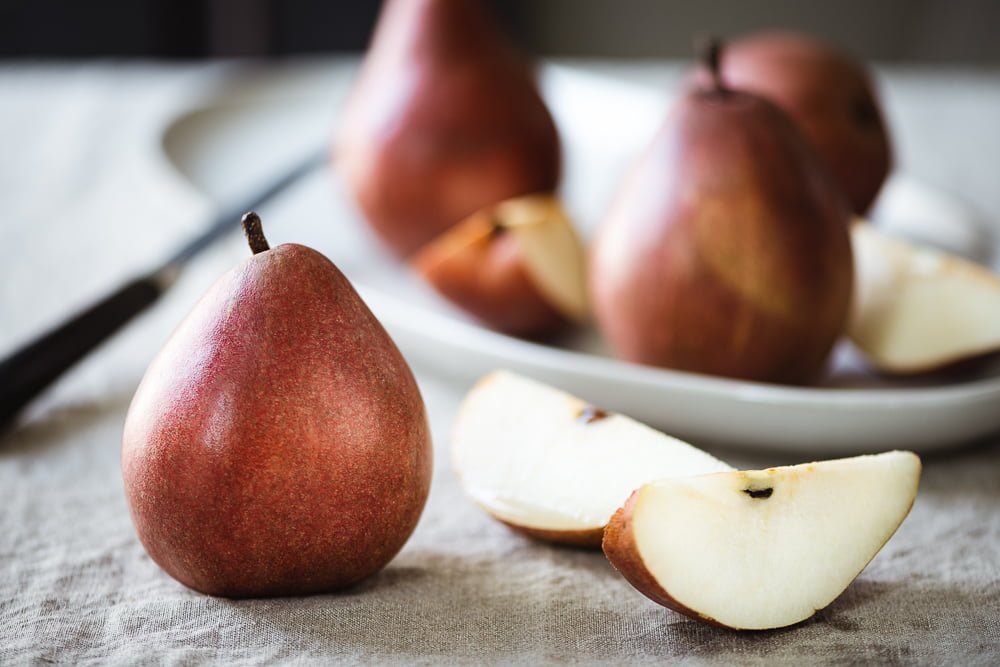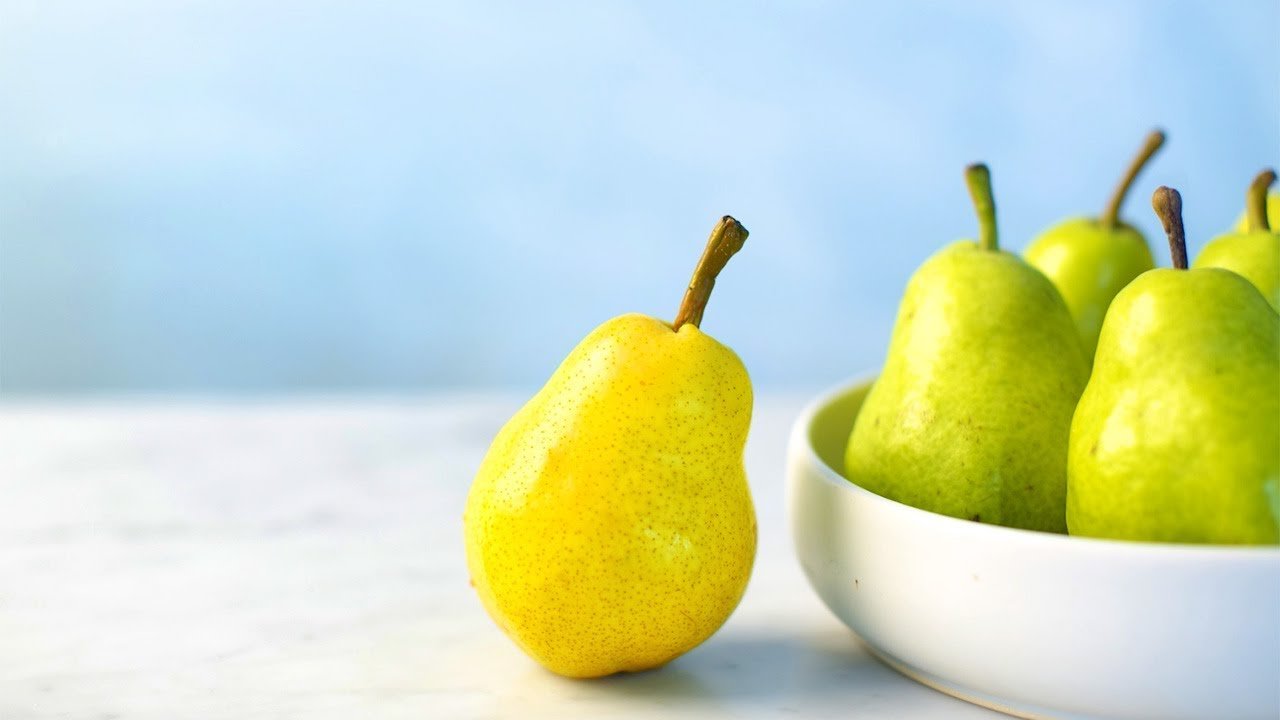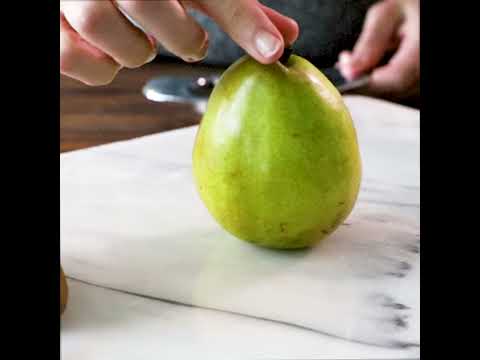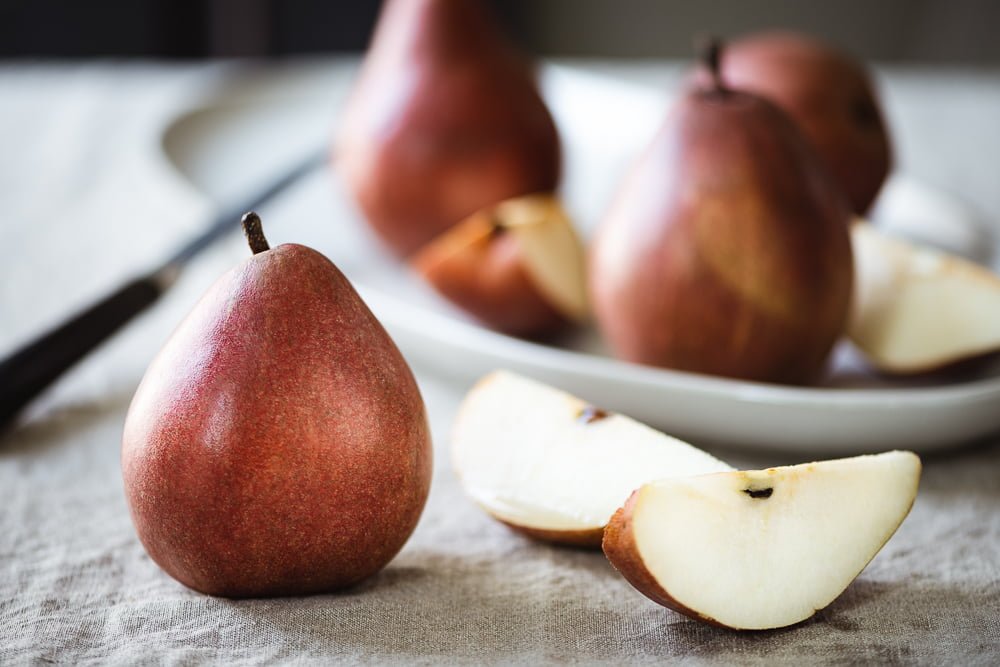Have you ever found yourself craving the juicy sweetness of a perfectly ripened pear, only to be disappointed by the hard and unripe fruit in your kitchen? Well, fret no more! In this article, you will discover quick and easy ways to ripen pears overnight, allowing you to indulge in their lusciousness sooner than you think. Say goodbye to waiting days for your pears to ripen naturally or settling for subpar fruit. With these handy tricks, you’ll be enjoying ripe and delicious pears in no time!

Choosing the Right Pears
When it comes to ripening pears overnight, selecting the right kind of pears is crucial. Here are a few factors to consider:
Opt for Underripe Pears
Choosing underripe pears is the first step in the process. Underripe pears are firm and have a slight hardness to them. They should not yield to gentle pressure when you squeeze them. Opting for underripe pears ensures that they have a longer shelf life and can be ripened to perfection at home.
Select Pears with Firm Skin
Look for pears with smooth, unblemished skin that is free from cuts or bruises. Pears with firm skin will have a better chance of ripening evenly and staying fresh throughout the ripening process.
Consider the Variety of Pears
Different varieties of pears have varying ripening times and flavors. Some popular pear varieties include Bartlett, Anjou, Bosc, and Comice. Each variety has its own unique characteristics, and the ripening methods may vary slightly depending on the specific type of pear you choose. Consider your personal preference for taste and the intended use of the pears when selecting the variety.
The Paper Bag Method
The paper bag method is a simple and effective way to ripen pears, as it harnesses the natural ethylene production of the fruit. Here’s how to do it:
Gather the Necessary Materials
To ripen pears using the paper bag method, you will need the following materials: underripe pears, a paper bag, and a ripening agent (such as a banana or an apple).
Place Pears in a Paper Bag
Once you have all the materials ready, carefully place the underripe pears into the paper bag. Be cautious not to overcrowd the bag, as the pears need some space for proper ripening.
Add a Ripening Agent
To speed up the ripening process, add a ripening agent to the paper bag along with the pears. Bananas and apples are commonly used as ripening agents due to their high ethylene production. Place a ripe banana or a ripe apple into the paper bag, ensuring that it is in close proximity to the pears.
Seal and Store the Bag Appropriately
After adding the ripening agent, carefully seal the paper bag to create an enclosed environment. This will trap the ethylene gas produced by the ripening agent, helping to accelerate the ripening process of the pears. Store the sealed bag at room temperature in a cool, dark place, such as a cupboard or pantry.

The Banana Method
If you’re looking for a hassle-free way to ripen pears overnight, the banana method is a great option. Here’s how you can do it:
Acquire Ripe Bananas
To ripen pears using the banana method, you will need ripe bananas. Ripe bananas produce ethylene gas, which helps accelerate the ripening process of the pears.
Prepare a Container
Find a container or a bowl that is large enough to hold both the ripe bananas and the underripe pears. Make sure the container has enough space for the pears to ripen without touching each other, as this could cause them to bruise or rot.
Place Pears with Bananas
Once you have the ripe bananas and the container ready, gently place the underripe pears into the container with the ripe bananas. Position the pears in a way that allows air circulation between them, promoting even ripening.
Seal the Container
To create an environment that encourages ripening, seal the container with a lid or plastic wrap. This will help trap the ethylene gas produced by the ripe bananas, allowing it to circulate around the pears and expedite the ripening process. Leave the sealed container at room temperature overnight or for a few days until the pears reach the desired ripeness.
The Apple Method
Using ripe apples to ripen pears is an effective and straightforward method. Here’s how you can do it:
Obtain a Ripe Apple
To start the ripening process, you will need a ripe apple. Ripe apples produce ethylene, which helps trigger the ripening process in other fruits, including pears.
Arrange the Pears and Apple
Find a shallow container or a plate where you can place the underripe pears and the ripe apple together. Arrange the pears around the apple while ensuring there is enough space between them for air circulation.
Cover the Container
To create a controlled environment that promotes ripening, cover the container with a clean kitchen towel or plastic wrap. This will help retain the ethylene gas produced by the ripe apple and concentrate it around the pears, accelerating the ripening process.
Monitor the Ripening Process
Check on the pears regularly to monitor their ripening progress. Depending on the initial ripeness of the pears and the room temperature, it may take anywhere from a couple of days to a week for the pears to fully ripen. Once the pears reach the desired ripeness, remove them from the container and enjoy!

The Pillow Method
For those who prefer a gentler way to ripen pears, the pillow method is a unique approach. Here’s how to do it:
Set Up a Clean Pillowcase
Start by preparing a clean pillowcase. Make sure it is free from any stains or odors that could affect the quality of the pears.
Place Pears in the Pillowcase
Carefully place the underripe pears into the pillowcase, ensuring that they are evenly distributed and not overcrowded. This method is particularly suitable for a larger quantity of pears.
Close and Hang the Pillowcase
Once the pears are securely inside the pillowcase, close the open end of the pillowcase and tie it tightly to prevent the pears from falling out. Hang the pillowcase in a cool, dark location where it can remain undisturbed during the ripening process.
Check for Ripeness
After a few days, check the pears for ripeness by gently pressing on the skin. If the pears yield to gentle pressure and have a fragrant aroma, they are ready to be enjoyed. If they are still firm, reseal the pillowcase and continue the ripening process for a few more days until they reach the desired ripeness.
The Oven Method
If you’re in a time crunch and need to ripen pears quickly, the oven method can come in handy. However, please note that this method requires careful monitoring to prevent the pears from overripening or becoming too soft. Here’s how it works:
Preheat the Oven
Preheat your oven to a low temperature setting, ideally around 200°F (93°C). This low heat will gently warm the pears without cooking them.
Prepare the Pears
Start by thoroughly washing the underripe pears and drying them gently with a clean towel. As this method can speed up ripening, it is crucial to inspect the pears for any signs of bruising or damage. Remove any damaged or spoiled parts before proceeding.
Place the Pears in the Oven
Arrange the prepared pears on a baking sheet or shallow baking dish, ensuring that they have ample space between them. Place the sheet or dish in the preheated oven and close the door.
Monitor the Pears Closely
Keep a close eye on the pears as they begin to warm in the oven. Check them frequently, approximately every 10 minutes, to assess their ripeness. Depending on the initial ripeness and the desired level of ripeness, it may take anywhere from 20 to 60 minutes for the pears to soften and ripen.
Once the pears reach the desired ripeness, remove them from the oven and allow them to cool before enjoying.

The Rice Method
The rice method is an interesting alternative for ripening pears that relies on the natural warmth and moisture-absorbing properties of uncooked rice. Here’s how you can employ this method:
Obtain Uncooked Rice
You will need a sufficient quantity of uncooked rice to bury the pears completely. Any type of rice will work for this method.
Fill a Container with Rice
Choose a container that can comfortably accommodate the underripe pears and the rice. Fill the container with enough uncooked rice to fully cover the pears.
Bury the Pears in Rice
Gently place the underripe pears into the container filled with uncooked rice. Ensure that the pears are completely covered by the rice. The rice will help create a warm and moderately humid environment, facilitating the ripening process.
Wait for the Pears to Ripen
Leave the container undisturbed for a few days to ripen the pears. The rice will absorb any excess moisture, helping to prevent the pears from becoming overly soft or mushy. Check on the pears periodically until they reach your desired level of ripeness.
The Ethylene-Rich Foods Method
Harnessing the natural ethylene production of certain fruits can significantly expedite the ripening process of pears. This method involves creating an enclosed environment that concentrates the ethylene gas around the pears. Here’s how you can utilize this method:
Identify Ethylene-Rich Foods
Identify fruits that have a high concentration of ethylene, as they will act as ripening agents for the pears. Common ethylene-rich fruits include bananas, apples, avocados, and peaches. Choose fruits that are already ripe or slightly overripe.
Create an Enclosed Environment
Find a container with a lid or a sealable plastic bag that can comfortably hold the underripe pears and the ethylene-rich fruits. It’s important to create an enclosed environment to allow the ethylene gas to concentrate around the pears.
Place Pears with Ethylene-Rich Foods
Carefully place the underripe pears into the container or plastic bag. Add the chosen ethylene-rich fruits alongside the pears, ensuring that they are in close proximity.
Let the Pears Ripen Overnight
Seal the container or plastic bag tightly to create an enclosed space. This will trap the ethylene gas emitted by the ripe fruits and encourage the pears to ripen faster. Leave the container or bag undisturbed overnight, or for around 24 hours, to allow the ripening process to take place. Check on the pears regularly to ensure they don’t become overly ripe.

The Fruit Bowl Method
A traditional and straightforward way to ripen pears is to place them in a fruit bowl alongside other ripening fruits. Here’s how you can make this method work effectively:
Arrange Pears in a Fruit Bowl
Select a clean and spacious fruit bowl to accommodate the underripe pears. Arrange the pears gently in the fruit bowl, ensuring that they have enough room to ripen without touching or bruising each other.
Add Other Ripening Fruits
To expedite the ripening process, add other fruits to the bowl that are known to produce ethylene, such as apples, bananas, or avocados. The ethylene gas emitted by these fruits will help accelerate the ripening of the pears.
Store the Fruit Bowl Properly
Place the fruit bowl in a cool, well-ventilated area, away from direct sunlight or heat sources. It’s important to keep the temperature stable to ensure uniform ripening. Avoid refrigerating the pears while using this method, as they will ripen more slowly in colder temperatures.
Check for Ripeness
Gently press on the pears after a few days to check for ripeness. If they yield to gentle pressure and have a pleasant aroma, they are ready to be enjoyed. If they are still firm, continue to monitor the fruit bowl, checking for ripeness every day until the desired level of ripening is achieved.
The Cooling Method
Using the cooling method is a popular choice for those who prefer a slower and more controlled ripening process. Here’s how you can use your refrigerator to ripen pears:
Use a Refrigerator
Ensure that your refrigerator is clean and free from strong odors that could affect the flavor of the pears. A refrigerator maintains a cool and consistent temperature, which slows down the ripening process and extends the shelf life of the pears.
Place Pears in a Plastic Bag
Carefully place the underripe pears into a plastic bag. This bag will help retain moisture and prevent the pears from dehydrating while in the refrigerator.
Store Pears in the Cooler Drawer
Optimal ripening conditions can be achieved by storing the pears in the cooler drawer of the refrigerator. This area typically offers slightly higher humidity levels and a cooler temperature compared to the main section of the refrigerator, which is ideal for ripening pears.
Monitor Pears for Ripeness
Pears stored in the refrigerator may take several days to ripen, depending on their initial ripeness and the refrigerator’s temperature. Check the pears periodically by gently pressing on their skin to assess ripeness. Once the pears feel slightly soft and fragrant, they are ready to be taken out of the refrigerator and enjoyed at their peak of ripeness.
With these ten methods at your disposal, you can now ripen pears overnight using various techniques that suit your preferences and available resources. Experiment with different methods to find the one that works best for you and enjoy perfectly ripe, delicious pears whenever you desire.



